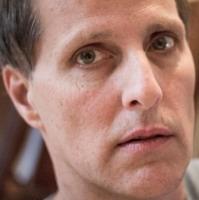Millard Schisler is Researcher at Digital Culture Center / CEBRAP in São Paulo, Brazil
It is wonderful to celebrate International Digital Preservation Day and recognize how much has been accomplished during the past decades, while also realizing how much we still need to work on, evidenced by the people, businesses and institutions struggling with how to deal with their ever-growing digital assets. As I think about our role in transforming this landscape, I go back to the beginning of this century, when Nancy McGovern and Anne Kenney talked about the three-legged stool that was necessary for digital preservation to happen: the organizational infrastructure, technological infrastructure and the resources (human and material). You cannot sit on a stool with just two legs – we need all three to maintain a balance, and one cannot be larger or smaller than another if we are to make the stool functional. I have used this image so much in my talks. With this awareness, another image came into my mind once when preparing for a lecture – if we were to connect all three legs at the bottom, it would provide the stool with extra sturdiness; this strength would come from the role of education within digital preservation.

We are already envisioning the role of an educator, serving as a Digital Preservation Specialist, a Digital Curator or Digital Steward, as a person who is able to bring together all the different factors that are involved in the long-term preservation of digital assets – much like the connectors that reinforce the stool.
However, to further explain the necessity of the role of education within digital preservation, it is imperative to define a few terms. First, to inform, which is to give someone facts or information; this is different than to form, which is to bring together parts or combine to create something. Both are educational processes. We have been informing people about the urgency to think and act on digital preservation for a few decades now through lectures, seminars, conferences, and papers, among others. The role of informing has shaped my experience here in Brazil for the past decade. Nevertheless, you can only go so far by informing people about the important facts and concerns of the preservation of digital assets.
It seems now that we need to take further steps to not only inform people, but to also form professionals that can build this field of practice by bringing together all the parts involved in digital preservation. With some degree of frustration stemming from wanting to do more than just inform, a small group of researchers teamed up to work on creating a professional master’s degree in Brazil that revolves around Digital Preservation. This group has also been able to bring together a community of scholars and practitioners that have been discussing this field throughout the country. Our goal is to create a program that will shape professionals that can connect the legs of the stool. Through the idea of a community of students and researchers working together through denser programs and continuous education, we also hope to connect to many other educational programs and communities that are budding around the world that are forming new professionals in this field.
